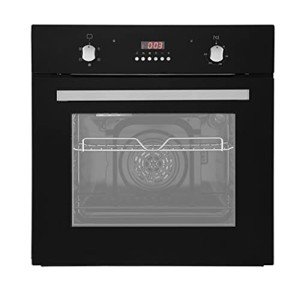How Much Do In Built Oven Experts Earn?
Understanding In-Built Ovens: A Comprehensive Guide
In the realm of modern kitchen design, in-built ovens have actually risen to prominence, blending functionality with aesthetics. Their seamless integration into cabinets supplies a structured appearance, making them progressively preferred by house owners and culinary lovers alike. This post checks out the numerous functions, advantages, setup considerations, and popular types of built-in ovens, along with responding to some frequently asked questions.
What is an In-Built Oven?
An inbuilt oven, frequently described as a built-in oven, is a kitchen device designed to be set up within cabinetry, rather than as a freestanding system. This configuration enables for a more sophisticated and organized kitchen layout while optimizing available area. Built-in ovens can be found in various sizes, styles, and functionalities to fit various cooking needs and preferences.
Advantages of In-Built Ovens
The advantages of setting up an inbuilt oven extend beyond mere visual appeals. Here are some essential benefits:
Space Efficiency: Built-in ovens are designed to fit snugly within kitchen cabinetry, making them ideal for compact spaces. built in gas hob and oven leaves counter area totally free for meal preparations.
Personalized Design: Homeowners can select from a range of designs and finishes to match their kitchen design, boosting the general look of the space.
Improved Functionality: Many built-in ovens are geared up with sophisticated cooking technology, providing functions such as convection cooking, steam cooking, and self-cleaning functions, which improve cooking effectiveness and flexibility.
Ergonomic Height: Installing an oven at eye level decreases the need to flex down, making it simpler to examine food and handle meals without straining the back.
Improved Safety: Built-in ovens can incorporate safety functions such as cool-to-the-touch surface areas and child locks, which can be especially important in homes with children.
Types of In-Built Ovens
In-built ovens come in several types to accommodate different cooking needs. Below is a contrast of typical types:
Type
Description
Pros
Cons
Single Oven
A conventional oven that cooks from one space
Space-efficient, simpler to utilize
Minimal cooking capability
Double Oven
2 different oven compartments for varied cooking
More cooking area, versatility
Higher cost, uses up more space
Compact Oven
Smaller sized ovens perfect for small cooking areas or as a second oven
Space-saving, flexible
Minimal capacity
Steam Oven
Uses steam for cooking, preserving wetness
Healthier cooking options
Normally more costly
Wall Oven
Built into the wall, readily available in single or double configurations
Saves floor space
Installation complexity
Features to Consider When Choosing an In-Built Oven
When selecting an in-built oven, several features must be taken into account:
Size: Measure your kitchen space and cabinetry to guarantee the oven fits properly. Common widths for built-in ovens range from 24 inches to 30 inches.
Cooking Methods: Determine the cooking approaches you prefer— standard, convection, or steam. This choice will substantially influence your cooking design and the oven's capabilities.
Energy Efficiency: Look for ovens with high energy performance scores. These models save money on energy expenses and are much better for the environment.
Control Options: Evaluate the control user interfaces. Some models use wise features allowing for remote cooking control and monitoring by means of smart device apps.
Safety Features: Ensure the oven comes with important security functions, particularly if children will exist. Lock-out systems and cool outsides are valuable enhancements.
Installation Considerations
Appropriate installation is vital for the optimum efficiency of an in-built oven. Here are some installation factors to consider:
- Ventilation: Ensure appropriate ventilation to get rid of smoke and smells. Consult local building regulations concerning kitchen ventilation requirements.
- Electrical Requirements: Built-in ovens typically need a dedicated electrical circuit. Have a competent electrical contractor examine affordability and security.
- Expert Installation: While DIY may be appealing, hiring an expert installer ensures the oven is fitted securely and securely.
FAQs About In-Built Ovens
What is the difference in between a built-in oven and a freestanding oven?
Built-in ovens are designed to be installed within kitchen cabinetry, whereas freestanding ovens can stand alone and typically integrate oven and cooktop in a single device.
Can I set up a built-in oven myself?
While DIY installation is possible, it is typically suggested to work with an expert to make sure security and adherence to local building codes.
Are built-in ovens worth the financial investment?
Yes, inbuilt ovens normally offer improved looks, advanced performance, and effective use of area compared to traditional freestanding designs.
What maintenance do inbuilt ovens need?
Routine cleansing, checking seals, and making sure proper ventilation are necessary maintenance tasks. It's advisable to follow the manufacturer's directions for particular care guidelines.
Just how much does a built-in oven usually cost?
Rates can vary substantially based upon features, brand, and type, but built-in ovens usually range from ₤ 700 to ₤ 3,000 or more.
In-built ovens provide a blend of elegance and practicality, making them an exceptional choice for both new constructions and kitchen remodels. Comprehending the types, features, and setup considerations can empower property owners to make educated decisions about which built-in oven best matches their needs. As cooking patterns evolve and kitchen style becomes more advanced, in-built ovens will continue to play a considerable role in contemporary kitchens, combining cooking with style and functionality.
